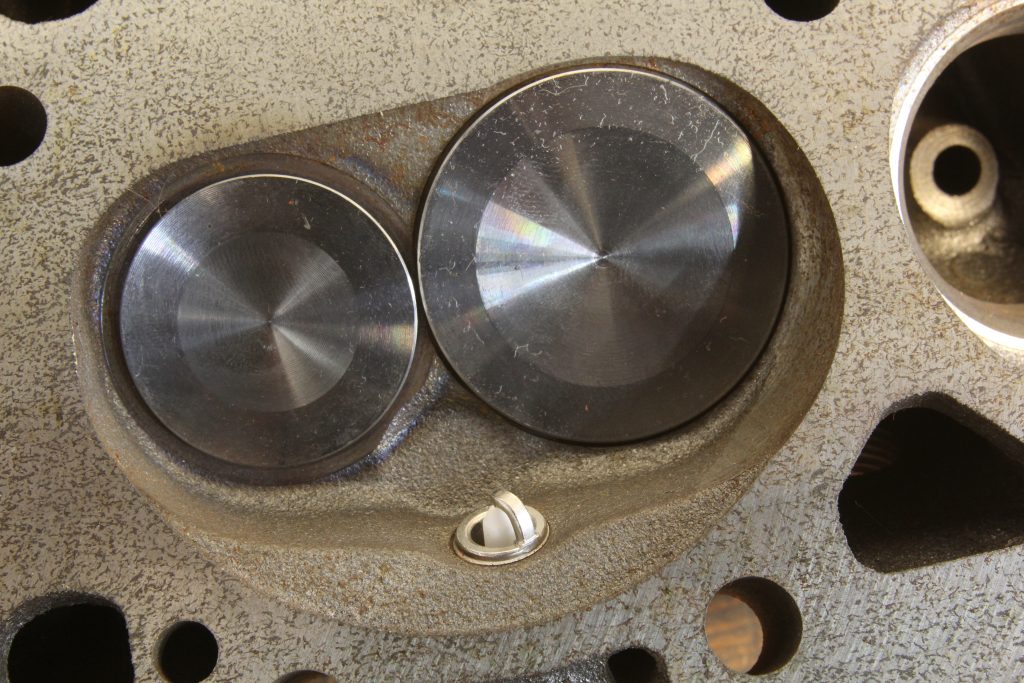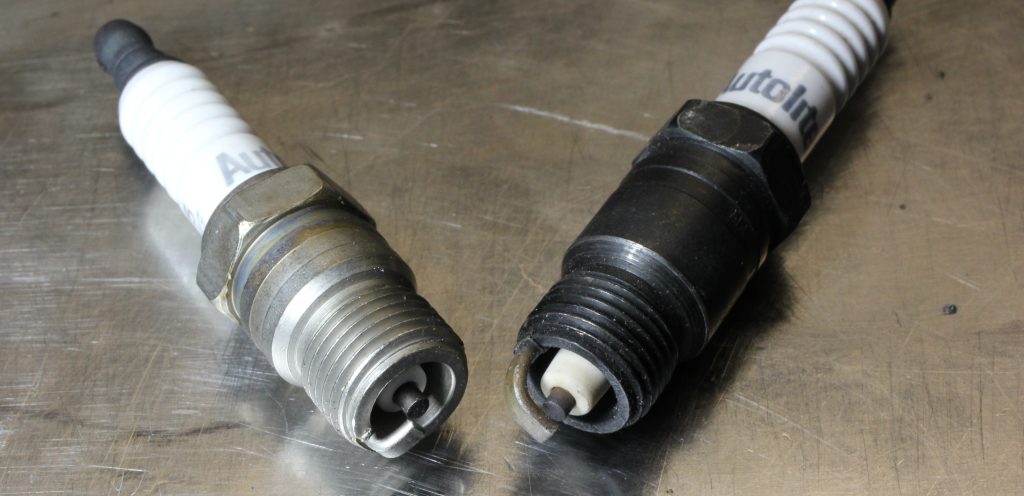What does indexing the spark plugs mean? I was poking around one of my favorite forums and indexing plugs was mentioned and I’m not sure what they were talking about. Can you fill me in?
T.B.
Thanks,
This is an old engine builder trick that orients the open portion of the spark plug gap to point (depending upon the opinion of the builder) either to the intake valve or toward the exhaust valve with the open side of the plug gap facing the chamber.
When a spark plug is threaded into the combustion chamber, the starting point for the threads generally dictates how the spark plug ground strap will be oriented when it is torqued in place. Indexing begins by placing a Sharpie mark on the outside ceramic insulator of the spark plug in line with the ground strap. Then thread the plug into the cylinder and the mark will indicate where the ground strap is positioned.
There were varying theories as to where you wanted the ground strap located. Most agree that the strap should be positioned away from the center of the combustion chamber. In order to position all eight spark plugs you often have to buy a second set of plugs to find eight that will be positioned where desired.

Several engine builders (including OnAllCylinders contributor Richard Holdener) have performed dyno testing to evaluate this trick and they all conclude that it is a waste of effort.
So the bottom line is that if you want to index the plugs you can, but it really isn’t something that can be measured in terms of a power increase. It doesn’t hurt power, but neither does it appear to help.
Other Spark Plug Factors to Consider
For a street engine, what should help is using a projected nose spark plug. These plugs push the center electrode farther away from the end of the threads on the spark plug body. The idea is to move the origin of the spark closer to the center of the combustion chamber where there will be a more equal distance for the flame front to travel across the combustion chamber.

This is not tied into whether the spark plug is a cold or hot heat range. Some people get confused with this because they think a projected nose spark plug will automatically be a hotter heat range plug. Those two details are completely separate from one another. Most street spark plugs should be near the center or slightly on the hot side of the heat range to ensure that plug electrode is hot enough to burn off deposits. If it is too cold, the plug will eventually foul and cause a misfire because combustion residue does not burn off.
Heat range is a far more important selection than indexing. On a performance engine with aftermarket heads, the common question is what heat range spark plug to run. For example, let’s say you have a normally aspirated 383ci small block Chevy with a compression ratio of 10.5:1 with a set of Trick Flow Super 23 195cc intake port aluminum heads. The Trick Flow instructions recommend either an Autolite 3924 or a Champion RC9YC. These plugs are in the middle of their heat range and a good starting point. The 3924 plug is 0.500 inch thread reach with a gasket (instead of a tapered seat) to seal to the head and offers a projected nose.
If you were to later install a supercharger on this same engine, a colder lug with a non-projected nose would be a wise choice. The longer ground strap on a projected nose spark plug also demands a longer ground strap. Under high cylinder pressure and temperatures under boost at wide open throttle, this longer ground strap can become a heat source like a glow plug that can cause pre-ignition which is a very dangerous condition where a heat source like the glowing ground strap ignites the fuel in the chamber long before the spark plug fires.
This can cause near instantaneous engine damage like broken pistons.
An Autolite plug that is slightly colder in heat range but with a non-projected nose might be one like the Autolite AR 3932.

Very interesting I appreciate you sharing this information I had no clue about this until I read your comment hard to believe that just turning a plug can make a difference I knew a little about heat range but I know a more now thanks
Well Dennis, as the article clearly states, indexing the plugs does NOT make any measurable difference. Put down the weed old people!
In the photograph of the 2 valves both intake and exhaust I’m assuming the small valve is the intake valve?
In nearly all four stroke engines the intake valve will always be larger. This is because when the exhaust valve opens, the pressure in the cylinder is higher and will push a great majority of the exhaust gas out past the valve. So the valve can be smaller, allowing room in the combustion chamber to make the intake valve larger, which helps with making more power.